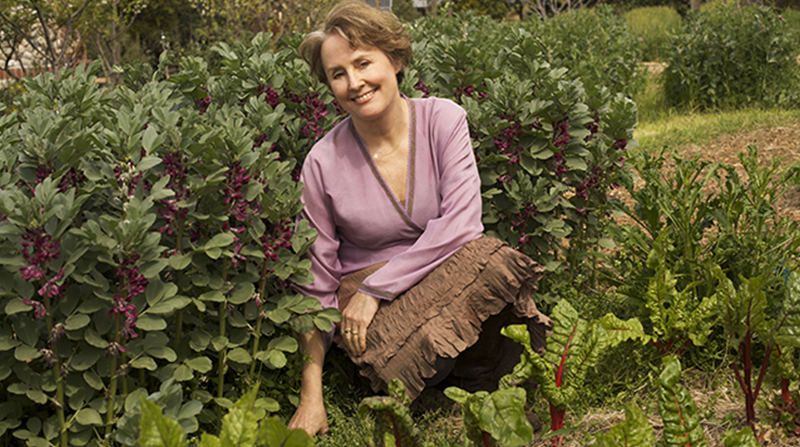

Chef Alice Waters, Photo Credit: David Littschwager
Chef, author, culinary trailblazer and owner of Berkeley’s Chez Panisse , Alice Waters maintains that cooking should be based on the finest and freshest seasonal ingredients that are sustainable and local.
She serves as vice president of Slow Food International, a nonprofit organization that promotes and celebrates local artisanal food, and has written numerous books (including The Art of Simple Food: Notes and Recipes from a Delicious Revolution), but she’s probably best known as the pioneer of California cuisine.
We sat down with Waters to find out more about how the food activist crafts her menus and the ingredients she can’t live without.
How you decide to become a chef?
I went to France when I was 19. I don’t know whether I ever really seriously thought about food before I went to France, but I was just taken in. I was surprised by the market and by the little restaurants, and the delicious bread, and all of the ways that people were living their lives. I wanted to live like that.
So when I came back, I started to cook for my friends. Then I started teaching at a Montessori school, and I just thought, “I’d really like to cook.” And maybe this would be a way that I could have my friends come and eat, but then they’d pay for it.
Where does the name of Chez Panisse restaurant come from?
The name of Chez Panisse comes from the films of Marcel Pagnol. These beautiful films were made in the ’30s in France. And I just laughed and cried when I first saw them. And I wanted that spirit in this place. So I named the restaurant after the character, the one that made the most money, Panisse, and I named my daughter after one of the other characters in the film — Fanny.
How you create menus at Chez Panisse?
You can dream up a meal, but if you don’t have the ingredients, it can’t be accomplished the way you have in mind.
So I always begin with the ingredients — always. I want to know what’s exactly in season. What could be picked that morning and brought to the restaurant. What can be taken out of the sea and brought to me. I mean, it’s about aliveness. So that’s where I begin.
Then I want all the dishes to tie together in some way. I fall back a lot on traditional combinations of food. I always think of lamb with beans first. And then I think of other things with lamb and beans. And I sort of embroider on that.
I’m looking for texture and color. I never want anything too sweet at the end. I always liked fruit and cheese and a little bit of sweet. I want you to feel full but not too full.
How do you define California cuisine?
The way that I think about what I’m doing — it’s not really new. It’s something that’s very old. It’s growing food nearby; picking it when it’s ripe, bringing it home; cooking it with family and friends; and eating it together.
That’s really what I was trying to do with the restaurant. So in the search for local ingredients, people would think of what we were doing here as California cuisine, or new American cooking, but it’s about a philosophy of food that has been around for a very, very long time. It’s just that we’ve been disconnected with that. And we’re kind of coming back to our senses.
What are your favorite ingredients?
I don’t think I could live without salad. I don’t think I could live without bread. And I don’t think I could live without beautiful fruit. Garlic — that’s probably No. 1.
